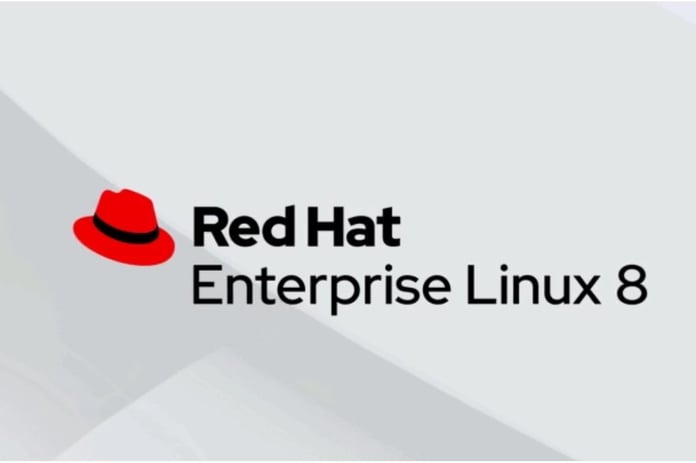Red Hat is kicking off its annual Red Hat Summit customer event on May 7, announcing the release of Red Hat Enterprise Linux 8.
Red Hat Enterprise Linux 8 adds multiple new features including a web console, application streams, improved security and updated configuration capabilities. Red Hat Enteprise Linux is Red Hat’s flagship platform, serving as a foundational component for application, container and cloud infrastructure delivery.
The impact of Red Hat Enterprise Linux is non-trivial, with a Red Hat sponsored IDC study reporting that the enterprise Linux platform has a $10 trillion impact on global business revenues.
The Red Hat Enteprise Linux 8 update is the first major version upgrade since Red Hat Enterprise Linux 7 launched in June 2014. The first public beta of Red Hat Enteprise Linux 8 was released in November 2018, providing an early look at the new features.
Interest in the beta was high according to Ron Pacheco, director, Product Management for Red Hat Enterprise Linux. Pacheco told eWEEK that there were more than 10,000 downloads of Red Hat Enterprise Linux 8 beta. In contrast, for the version 7 beta, he said that Red Hat only had approximately 2,000 downloads.
Web Console
Among the features that beta users were particularly interested in was the new Web Console feature.
“We received a lot of interest in the Red Hat Enterprise Linux Web Console, even though we have a lot of command line heroes in our installed base,” Pacheco said.
The Web Console is based on the open-source Cockpit project that first appeared in Red Hat’s community Fedora 25 Linux distribution in 2016. Pacheco said that that the Red Hat Enterprise Linux web console is based on the Cockpit project, scaled and hardened to support the production role of Red Hat Enterprise Linux 8. He explained that the web console is intended to do specific, system-level monitoring and maintenance, like managing virtual machines and assessing system.
“It’s there to give sysadmins tool a way to abstract the complexities of dealing with increasingly heterogeneous operating system footprints,” Pacheco said.
Red Hat users have long had multiple options for system management, with the other primary tools being Satellite. Pacheco said that Satellite is intended to manage at-scale.
“The web console works well with Satellite, but one is intended for systems-level management while the other is at scale,” Pacheco said.
Application Streams
In the past with Red Hat Enterprise Linux, each major release was closely associated with a specific set of version numbers for programming languages and core application software stacks. With Red Hat Enterprise Linux 8, organizations will no longer be tethered to specific version numbers of software, thanks to the Application Streams feature.
With Application Streams, an organization can choose different version numbers of supported software stacks that can run on Red Hat Enterprise Linux 8. A primary reason why Red Hat has long associated specific version numbers with a given enterprise platform release has been to provide certifiable software that won’t break other software running on a system. The concept of compatibility and stability will still carry forward with Application Streams as well.
“Red Hat Enterprise Linux continues to publish an Application Compatibility Guide, which clearly defines the application binary interfaces (ABIs) that we will preserve and for how long,” Pacheco said. “The vast majority of the user space will continue to have a 10 year ABI that we will preserve, so this will continue to support certifications and application stability.”
Universal Base Image
As part of the new platform rollout, Red Hat is also announcing its new Universal Base Image (UBI) effort.
“The Universal Base Image is derived from Red Hat Enterprise Linux – so it brings two of the key characteristics of Red Hat Enterprise Linux, security and stability, into a base layer image that’s freely available and redistributable,” Pacheco said. “This provides a level of stability and curation to cloud-native applications built with the base image, even if the developer isn’t necessarily a Red Hat Enterprise Linux subscriber.”
At the core of Red Hat Enterprise Linux is a Linux 4.18 kernel, which is a kernel that was first released by Linus Torvalds in August 2018. Pacheno noted that the Red Hat kernel benefits from extensive backports.
“This means that we have established a kernel ABI that we will preserve for the life of RHEL 8 and backports are measured against,” he said.
Red Hat Enteprise Linux 7 Continues
With Red Hat Enteprise Linux 8 now available, that doesn’t mean that it’s the end of the line for existing Red Hat Enteprise Linux 7 or even version 6 customers.
“Red Hat Enterprise Linux 7 provides a stable, mature platform for production workloads and continues to be supported as part of the 10-year Red Hat Enterprise Linux lifecycle,” Pacheco said. “All Red Hat Enterprise Linux subscriptions have the opportunity to upgrade to newer versions of the platform at any time; with RHEL 8, we provide several tools to make this process easier, including enhancements to in-place upgrades to improve the overall process.”
Sean Michael Kerner is a senior editor at eWEEK and InternetNews.com. Follow him on Twitter @TechJournalist.
